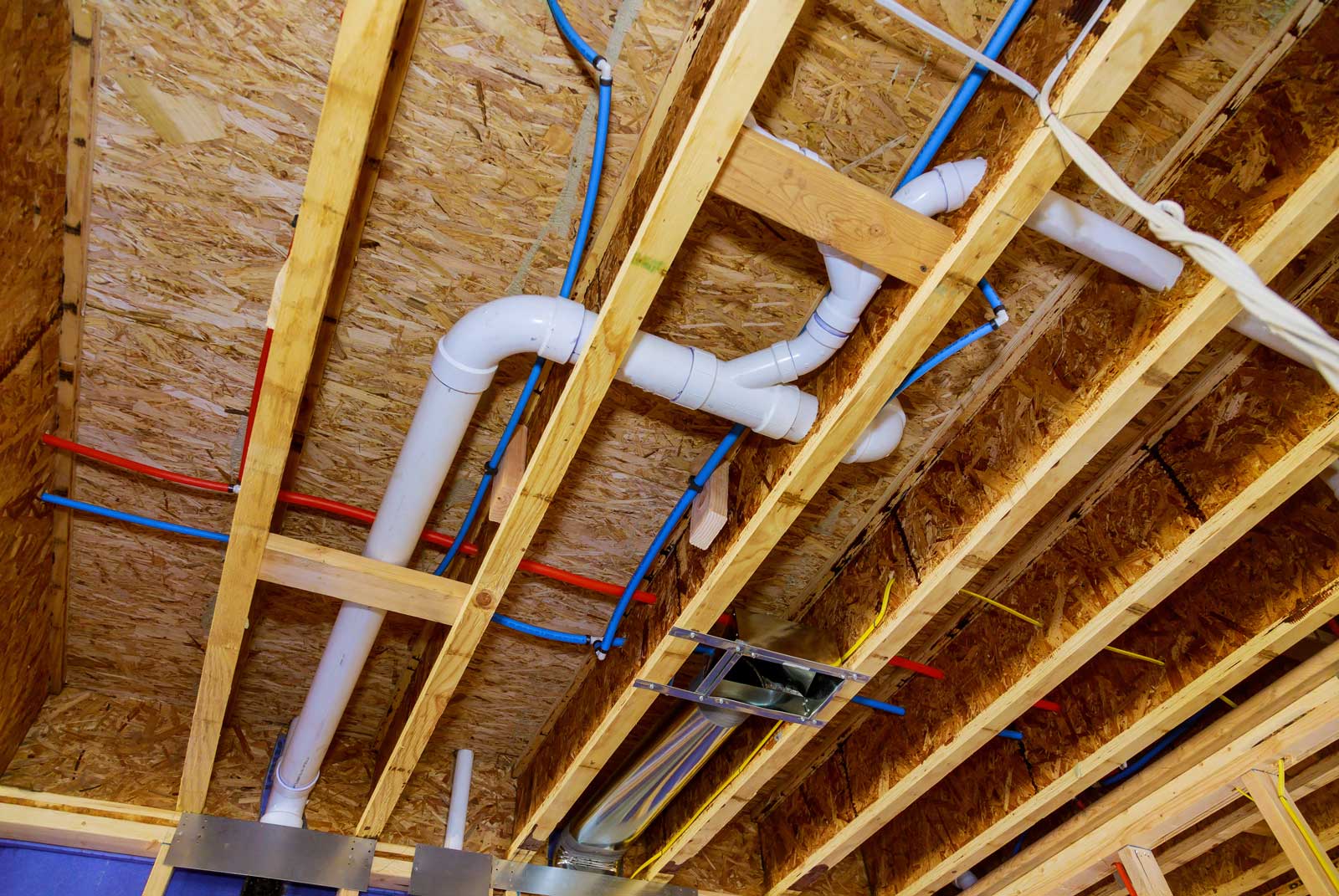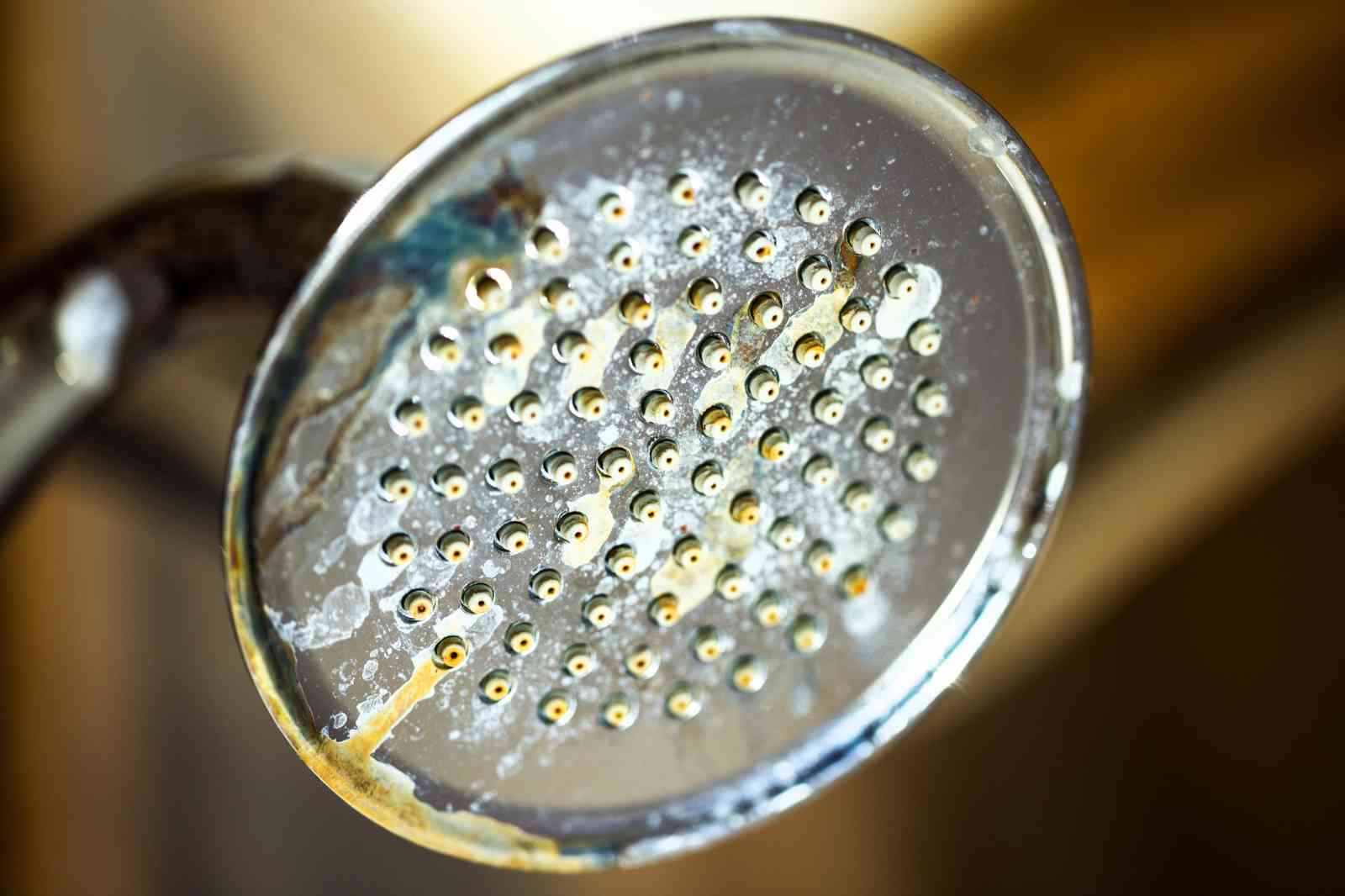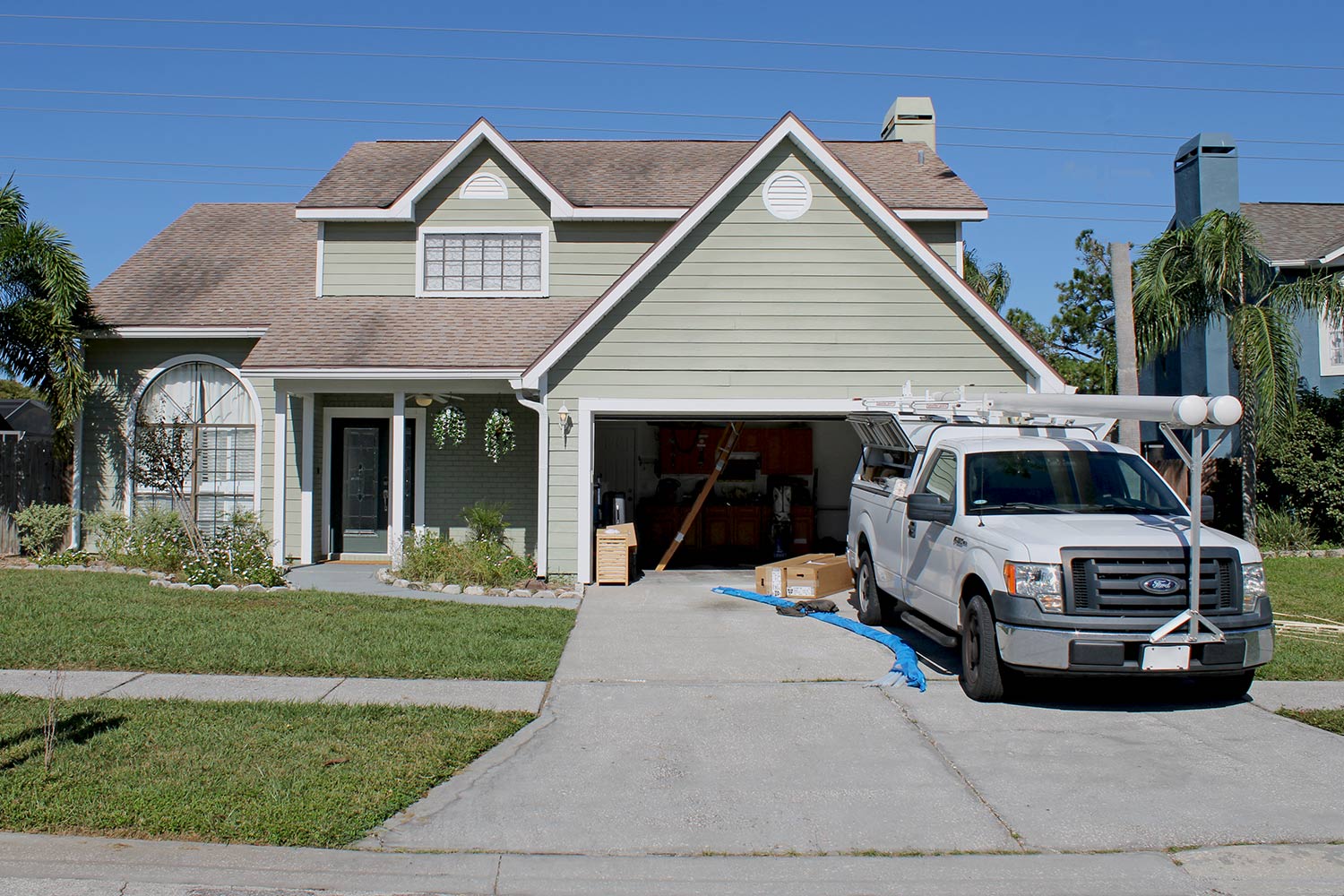Investing in the infrastructure of your home is akin to fortifying the foundations of your dreams. Repiping can be an intimidating phrase for any homeowner, conjuring images of exposed walls, hefty invoices, and uncertainty about what lies beneath. But the value of a reliable, efficient plumbing system is immeasurable, and the process—though complex—can be navigated with a plumber, right knowledge and approach. Read on for everything you need to know to prepare for a whole-house repiping.
Understanding the Need and Benefits of Whole House Repipe
Before you start tearing down walls and comparing pipe materials, it’s crucial to understand why you might need to consider a whole-house repiping project. The inner workings of your plumbing are vital to the functionality of your home, and they can deteriorate over time. Signs that your system may be compromised include low water pressure, discolored water, and frequent leaks. One specific indicator to watch for is copper pinhole leaks. A copper pipe pinhole leak suggests that the copper piping has corroded internally. It’s highly unlikely for this corrosion to occur in just a single section of pipe, implying a more extensive issue within your plumbing system.
By repiping, you can ensure a safer, cleaner water supply, prevent future costly repairs, and even increase the value of your property. Addressing these systemic issues proactively will save you from the hassle of recurring problems and provide peace of mind knowing your plumbing is in top shape.
Identifying Indicators Your Home Requires A Repiping Service
Your home is trying to communicate with you. By paying attention to its subtle (and sometimes not-so-subtle) signs, you can catch plumbing issues before they escalate. But, how do you know when to consider repiping your house? Common indicators that your home may need repiping include:
- Age of the pipes: If your house is over 50 years old with original plumbing, it might be time for an update.All plumbing systems have an expected life expectancy, but these can vary widely even for the same material. For instance, hard water with high mineral content can significantly reduce the lifespan of your plumbing system. Additionally, lower-grade copper may fail much sooner than higher-grade copper pipes.
It’s important to remember that plumbing systems, like roofing or flooring, are not expected to last forever. Homeowners should plan for the eventual need to replace their plumbing as part of regular home maintenance.
- Polybutylene pipes: If your house was built between 1970-1990 there is a chance you have polybutylene pipes. They will eventually fail over time. These are one of the main reasons it’s time to repipe. More on this below.
- Water quality changes: Rusty, brown, or discolored water indicates pipe corrosion. When the source water supply, whether from a well or municipal system, is clear, this discoloration is most commonly caused by corroded, rusty galvanized piping. Identifying the source and type of piping can help you determine the necessary steps to improve your water quality.
- Frequent leaks: An old, degraded system will spring leaks often. You may consider a leak detection expert to find leaks in your slab or walls.
- Temperature changes: Inconsistent water temperatures can signal pipe integrity issues.
One specific issue to watch for is low pressure or low flow at multiple outlets. When municipal pressure is high, and the home water pressure regulator is working properly, experiencing low pressure or flow likely indicates constricted flow water pipes. This problem is commonly caused by corrosion and/or sediment buildup within the pipes.
By recognizing these red flags and acting proactively, you can save money and safeguard the structural integrity of your home.
Why Do Polybutylene Pipes Fail?
The fundamental cause of failure in PB pipes stems from their design, which was not intended for hot water systems commonly found in today’s homes. Originally, these pipes were deemed suitable only for cold water applications. Consequently, when subjected to hot water, the pipes underwent expansion and contraction, progressively weakening them and ultimately leading to leaks, ruptures, and corrosion.
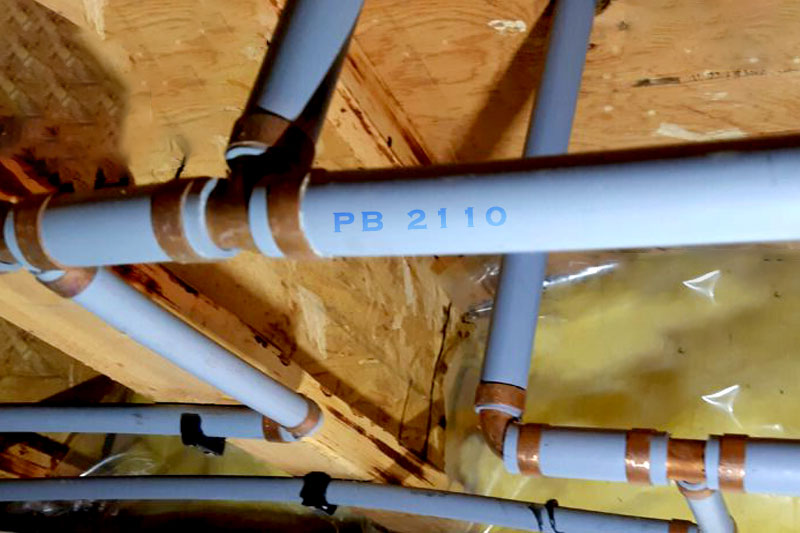
Moreover, the fittings often used with PB piping, typically made from brass, are prone to corrosion at elevated temperatures, further exacerbating leak issues. Additionally, the cost-effectiveness of PB piping made it an attractive option for contractors, despite its unsuitability for hot water systems, leading to its widespread but ill-advised installation over more appropriate materials like copper or PEX.
Polybutylene pipes are considered so unreliable that the majority of insurance companies refuse to provide coverage for homes with this type of piping. Shell Oil, the manufacturer of polybutylene, faced a class action lawsuit in the 1990s as a result of the extensive damage caused by these pipes.
A Step-by-Step Guide to the Repipe Service Process
A whole-house repiping project is a significant undertaking, but breaking down the process into clear steps can ease the stress. The primary stages include:
- Initial assessment: A professional will perform a thorough evaluation to determine the scope of the project.
- Planning and permit: Detailed planning ensures the proper execution of the repiping. Permit acquisition may be necessary.
- Preparation: Clearing affected areas, securing utilities, and planning for alternative water sources are essential steps.
- Piping installation: The old pipes are removed, and new ones are installed according to the plan.
- Inspection: A city or county inspector will evaluate the new system’s compliance with building codes.
- Restoration: Drywall is repaired, and any other disrupted areas are returned to their original state.
By having a comprehensive understanding of these steps, you can better manage your expectations and oversee the project effectively.
Choosing the Right Materials for Repiping a House in Florida
There are several options when it comes to repiping materials, each with its pros and cons. The most common new pipe choices include:
- PEX Pipes (crosslinked polyethylene): A flexible, affordable option known for easy installation and resistance to freezing. PEX can be significantly less expensive than copper, making it an attractive choice for budget-conscious homeowners. Additionally, its flexibility allows for easier installation in tight spaces, reducing labor costs and project time.For those curious about a deeper dive into whether PEX is the right choice for your repiping needs, consider factors like long-term durability and compatibility with your existing plumbing system. Read our article: Is PEX a Good Choice for Repiping? for a comprehensive analysis, including comparisons with other materials and expert insights.
- Copper Pipes: Recognized for its durability and reliability, copper is often chosen for its long lifespan.
- CPVC Pipes (chlorinated polyvinyl chloride): Preferred for its resistance to corrosive materials and thermal conductivity.
Selecting the new pipes that best suits your home’s needs, water quality, and your budget is a critical decision that will impact your home’s plumbing for years to come.
Budgeting and Financing Your Tampa Repipe Project
Repiping is an investment, and like any investment, it requires careful financial planning. To budget effectively:
- Gain multiple quotes: Don’t settle for the first quote; get several to compare prices and services.
- Consider all costs: Materials, labor, permits, and unexpected contingencies should all be factored into your budget.
- Explore financing: If repiping is urgent but unaffordable, look into financing options that can lighten the immediate financial burden while ensuring a proper repipe.
Knowing the costs and financing options can make the project more manageable and give you peace of mind.
Hiring the Right Repipe Experts or Repiping Plumbers
Your choice of contractor can make or break your repiping project. Consider:
- Reputation: Look for reviews, ask for references, and ensure the contractor has a solid track record.
- Qualifications: Your contractor should be licensed, insured, and experienced with doing a repipe of your home.
- Communication: A good contractor will keep you informed throughout the process and discuss any unexpected findings or changes.
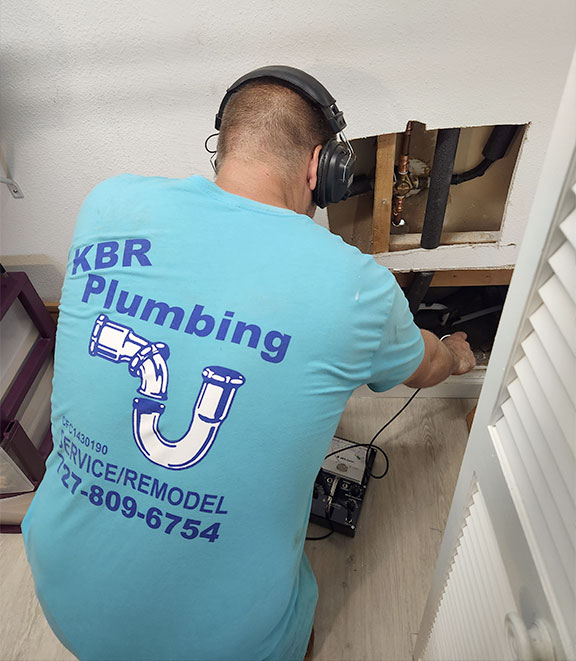
Make sure to conduct thorough interviews with potential candidates to gauge their suitability for your project.
Additionally, it’s crucial to understand the warranties offered for repiping. Pay attention to:
- What’s Covered: Find out the exact items, services, or issues that the warranty will cover.
- Exclusions: Learn what is not included in the warranty to understand its limitations.
- Time Periods: Check the duration of the warranty to know how long you will be protected.
- Transferability: Understand if the warranty can be transferred to a new owner if you sell your home.
By combining these considerations, you ensure that your repiping project is handled by a qualified professional and that you are well-protected by comprehensive warranties. This dual approach not only safeguards your investment but also provides peace of mind throughout the process.
How To Prepare For a Whole House Repipe Service
Once you’ve hired a contractor or repiping plumber and set a date for repiping your house, there are several steps you can take to prepare your home. Here are a few things you can expect from the process:
- Clear the work area: Move furniture, cover belongings, and clear the spaces around fixtures and access points to expedite the process.
- Plan for the water outage: Stock up on bottled water and designate an area for hygiene and cooking needs during the water shutoff period. Remember you may be without use of your kitchen sink and other faucets. Don’t forget to turn off your water when the time is right.
- Communicate with your contractor: Discuss the timeline and any pre-requisite actions to ensure a smooth start to the project. You may also choose to remodel or add additional plumbing services at this time.
The more prepared your home is, the quicker and less disruptive the repiping process will be.
Post House Repipe Maintenance Tips
A newly repiped home is an investment protected, but it’s not invincible. Some post-repiping maintenance tips include:
- Monitor for leaks: Even new installations can have issues. Regular checks for leaks and water damage are essential.
- Watch for water quality changes: Any strange odors, tastes, or discoloration in the water should be reported and investigated.
- Learn about your new system: Understand how it works and what to do in case of an emergency.
Maintaining an attentive eye on your home’s plumbing after repiping can help you catch and address issues before they become major problems.
Real-Life Case Studies and Success Stories of Repiping Services
Reading about the experiences of others who have gone through the repiping process can be not only educational but also reassuring. Real-life case studies can give you a sense of the process, costs, and outcomes.
- Before-and-after comparisons: Visual aids and descriptions can help you visualize the change in your home’s plumbing.
- Testimonials: The satisfaction of homeowners who have successfully repiped their homes can give you confidence in your choice to do the same.
Understanding the positive impact of repiping on real homes can motivate you to move forward with your own project. Consider doing some research on your own about plumbers and repipe contractors in your area and the customers they have serviced.
Conclusion and Next Steps for Repiping Services
Repiping your home is a significant but necessary step to ensure the comfort and safety of your home. Taking the time to understand the process, consider your options, and prepare properly can make all the difference. If you’ve noticed the signs, start putting your plan into action today. Contact a repiping professional, research your materials, budget accordingly, and prepare your home for the transformation it deserves. By the end of the process, you’ll have not only revitalized your plumbing but also reinforced the long-term security of your most cherished investment—your home. Feel free to contact us today to schedule a complimentary quote.
Frequently Asked Questions For House Repipe Jobs
Q: What are the signs that indicate I need a home repipe?
A: Look out for signs like low water pressure, discolored water, frequent leaks, and water stains on ceilings or walls which may indicate the need for repiping.
Q: How do I know if I have old plumbing in my house?
A: Old plumbing may be present in homes built several decades ago or if you are experiencing issues like frequent clogs, rust-colored water, or foul odors from taps.
Q: What is the process of repiping a house in Florida?
A: Repiping involves replacing old, damaged pipes with new ones. A team of qualified repiping plumbers will inspect your water supply system, plan the repiping process, and then proceed to replace the pipes with minimal disruption.
Q: How long does it take to execute a home repipe?
A: The time taken to repipe a house depends on the size and layout of your home, the extent of the damage to your current system, and whether any major home remodeling is involved. On average, it can take several days to complete.
Q: What are the common reasons that lead to a piping replacement?
A: The need to repipe a house can arise due to factors such as old plumbing, corrosion of pipes, sediment buildup, frequent plumbing repairs, or the presence of lead pipes which pose health risks.
Q: What is the average cost to repipe a house in Florida?
A: The overall cost of repiping your home can vary based on factors like the size of your home, the materials used, the complexity of the job, and whether any additional repairs are required. It’s best to get an inspection and estimate from a qualified plumber.
Q: What steps should I take to ensure a successful repiping service?
A: To ensure you’re well-prepared for repiping your whole house, get an inspection done by a Tampa repipe plumber, understand the extent of the work needed, plan for any disruptions, and choose a reputable plumber who can provide quality service.
